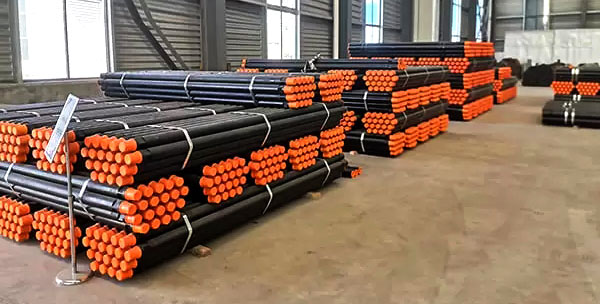Common faults and troubleshooting methods of T38 drill rod
Date: Oct. 15, 2024
If you are interested in our products, Please get in contact with us .
Date: Oct. 15, 2024 WhatsApp Send InquiryT38 drill pipe is widely used in mining and engineering construction, but due to various reasons, some common faults may occur. The following is a summary of common faults and their troubleshooting methods for T38 drill pipe:
Common faults and troubleshooting methods

1. Loose drill rod
Reason: The geometric dimensions and fitting dimensions of newly processed and assembled parts have deviations, which can cause fasteners to loosen easily in the early stages of use due to alternating loads such as impact and vibration, heating, deformation, and rapid wear.
Exclusion method : After the first use of the drill pipe, check and tighten any loose fasteners in a timely manner to ensure a stable connection of the drill pipe.
2. Rapid wear and tear
-Reason: Due to factors such as machining, assembly, and adjustment of new components, the surface of the parts is rough, the contact area of the mating surfaces is small, and the surface pressure conditions are poor, resulting in fast wear.
-Exclusion method: When the drill pipe is first used, the load should be appropriately reduced to avoid overloading and reduce wear. At the same time, regularly inspect and maintain drill rods, and promptly replace severely worn components.
3. Leakage
Reason: Loose and vibrating mechanical parts, as well as the impact of machine heating, can cause leakage on the sealing surface and pipe joints of the machine; Some casting, processing and other defects were rediscovered during assembly and debugging, resulting in leaks.
Exclusion method: Check and tighten loose parts, repair or replace defective seals and pipe joints to ensure good sealing.
4. Operational error
-Reason: The operator lacks sufficient understanding of the structure and performance of the machine, which can easily lead to malfunctions and mechanical accidents due to operational errors.
Exclusion method: Strengthen training for operators to ensure they are familiar with the structure and performance of drill pipes and avoid operational errors.
5. Poor lubrication
-Reason: The fit clearance of newly assembled parts is small, and due to assembly and other reasons, it is difficult to ensure the uniformity of the fit clearance, resulting in poor lubrication.
Exclusion method: Regularly check and adjust the fit clearance of the drill rod to ensure good lubrication and reduce wear.
Specific faults and troubleshooting methods
1. Motor speed is too slow
Reason: Insufficient air pressure, blocked intake pipeline, and need to clean filters and screens.
Exclusion method: Check the pressure gauge to ensure that the pressure is between 0.4 and 0.63MPa; Blow clean the intake pipeline, clean the filter and mesh.
2. The air leg descends too slowly
Reason: Lack of lubricating oil in the oil tank, damage to the air leg, and blockage of the quick release valve.
Exclusion method: Check the oil tank and add an appropriate amount of lubricating oil, check if the air leg is damaged and repair it, clean the quick release valve, and ensure smooth exhaust.
3. Decreased drilling speed
Reason: Insufficient air pressure, unsuitable or worn drill bit, insufficient water pressure or blocked waterway.
Exclusion method: Check and adjust the air pressure, use a suitable drill bit and replace worn ones in a timely manner, check the water pressure and clean the waterway.
4. Excessive swinging of the drilling rig during drilling**
Reason: Quality issues with drill rods, wear of drill sleeves, and air leg problems.
Exclusion method: Use qualified drill rods, inspect and replace worn drill sleeves, repair air legs, and replace worn parts.
Send us a message
You can also send a message to us by this email sales@sdkdrillingtools.com, we will reply to you within 24 hours. Now tell us your needs, there will be more favorable prices!

